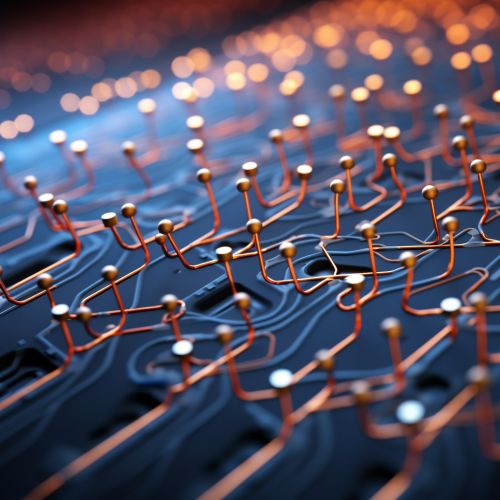Advances in Nanostructured Batteries
Introduction
Nanostructured materials have been a focal point in recent scientific research due to their unique properties and potential applications in various fields. One such application is in the development of advanced batteries, where nanostructured materials can significantly improve the performance and efficiency of energy storage systems. This article delves into the advances in nanostructured batteries, discussing the principles behind their operation, the different types of nanostructured materials used, and the latest developments in this field.


Principles of Nanostructured Batteries
The fundamental principle behind nanostructured batteries is the use of nanoscale materials to enhance the performance of the battery. These nanomaterials have a high surface area to volume ratio, which allows for a greater number of active sites for electrochemical reactions. This, in turn, leads to an increase in the battery's energy density and power density.
Types of Nanostructured Materials Used in Batteries
There are several types of nanostructured materials that are commonly used in batteries. These include nanowires, nanotubes, nanoparticles, and nanosheets. Each of these materials has unique properties that make them suitable for specific applications.
Nanowires
Nanowires are one-dimensional nanostructures with diameters in the nanometer range and lengths up to several micrometers. They have high aspect ratios, which allow for efficient electron transport and high power density.
Nanotubes
Nanotubes are cylindrical nanostructures with a hollow interior. They have excellent mechanical strength and electrical conductivity, making them ideal for use in high-performance batteries.
Nanoparticles
Nanoparticles are zero-dimensional nanostructures with diameters typically less than 100 nanometers. They have a high surface area to volume ratio, which allows for a high number of active sites for electrochemical reactions.
Nanosheets
Nanosheets are two-dimensional nanostructures with thicknesses in the nanometer range. They have large surface areas and excellent electrical conductivity, making them suitable for use in high-capacity batteries.
Advances in Nanostructured Batteries
The use of nanostructured materials in batteries has led to several significant advances in recent years. These include improvements in energy density, power density, cycle life, and safety.
Improved Energy Density
One of the most significant advances in nanostructured batteries is the improvement in energy density. This is largely due to the high surface area to volume ratio of nanomaterials, which allows for a greater number of active sites for electrochemical reactions.
Increased Power Density
Another major advance is the increase in power density. Nanostructured materials have excellent electrical conductivity, which allows for rapid electron transport and high power output.
Extended Cycle Life
Nanostructured batteries also have extended cycle life compared to conventional batteries. This is because nanomaterials are less prone to degradation during charge and discharge cycles, resulting in longer battery life.
Enhanced Safety
Finally, nanostructured batteries are safer than conventional batteries. This is because nanomaterials have a high thermal stability, reducing the risk of thermal runaway and battery failure.
Future Prospects
The field of nanostructured batteries is still in its early stages, and there is much potential for further advances. Future research will likely focus on developing new types of nanostructured materials, improving the performance of existing materials, and exploring new applications for nanostructured batteries.
